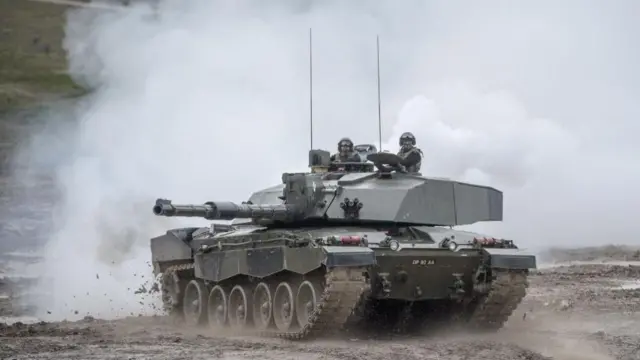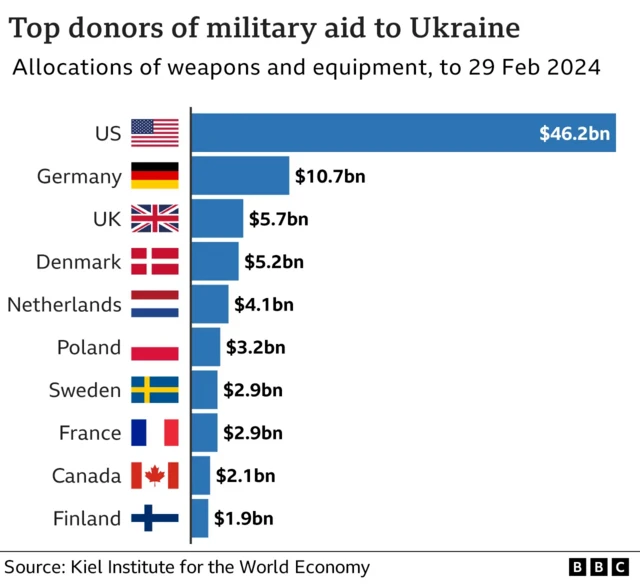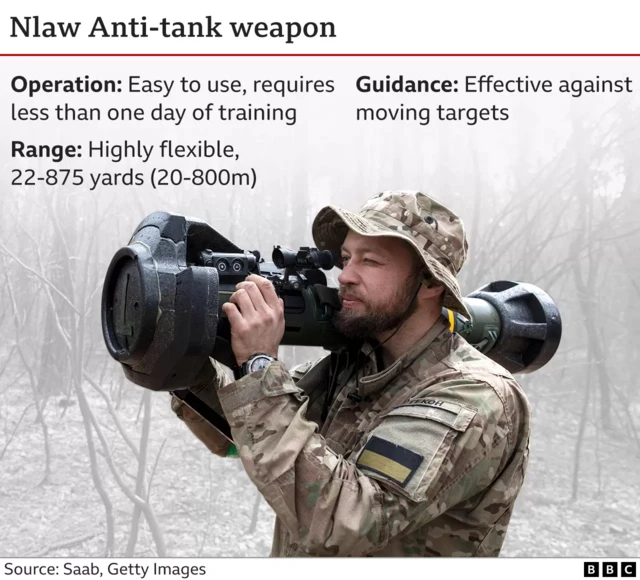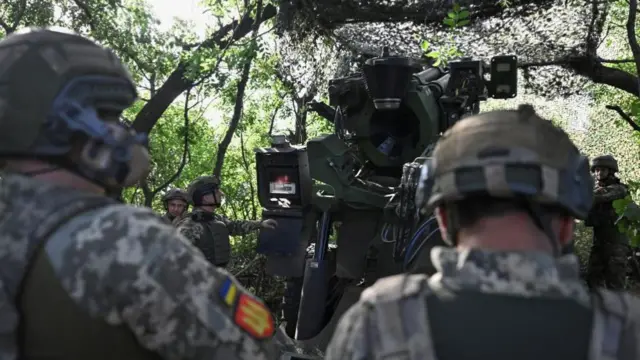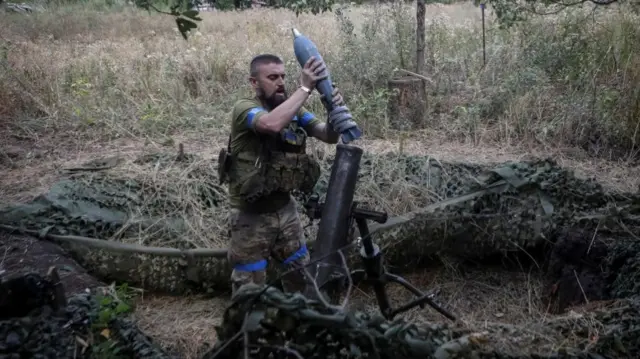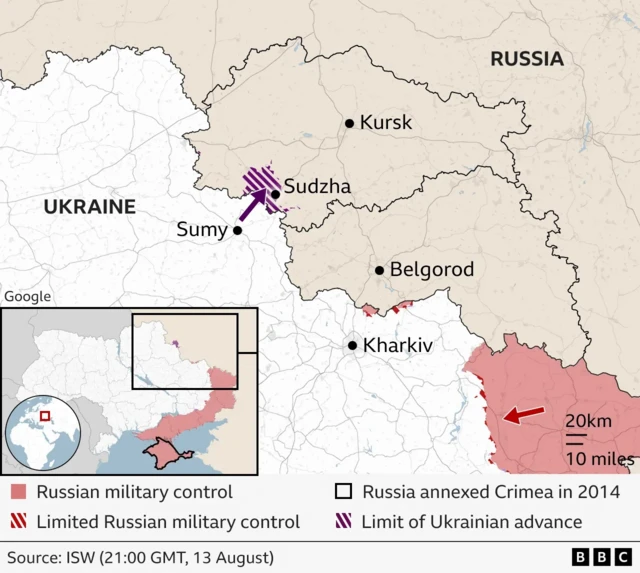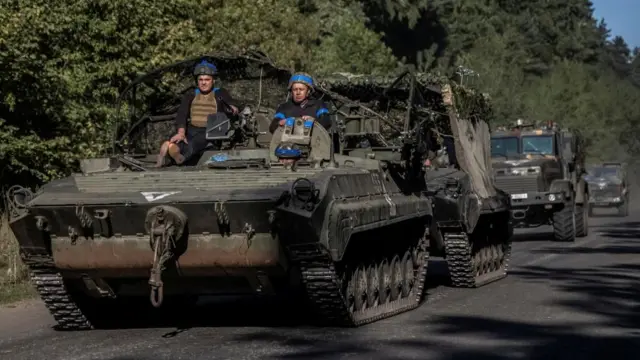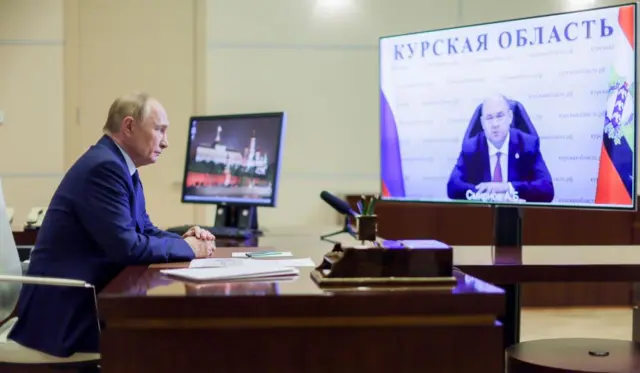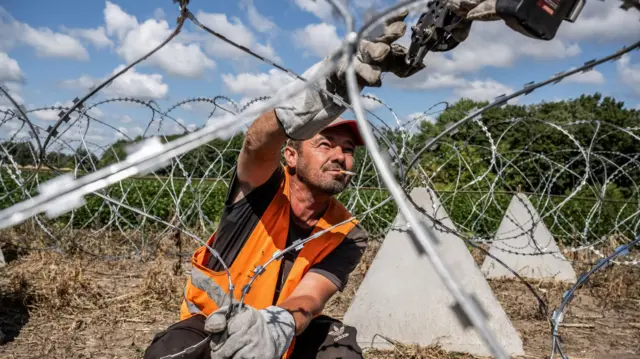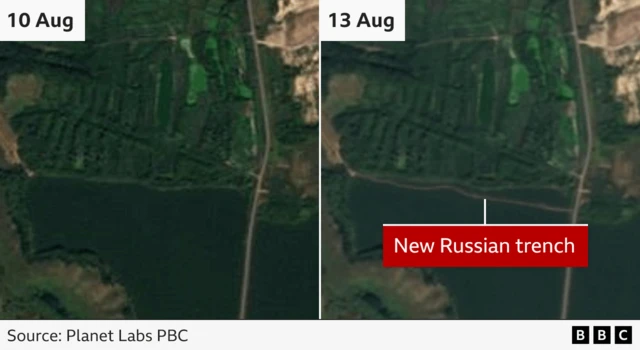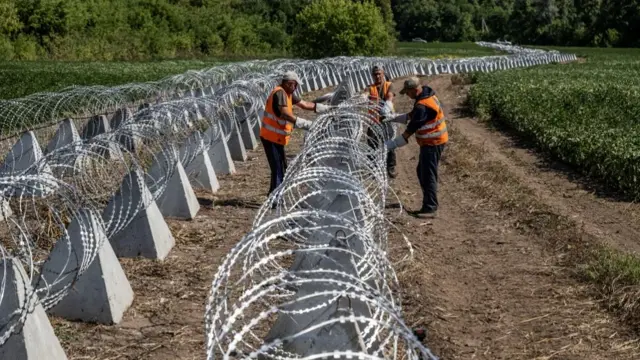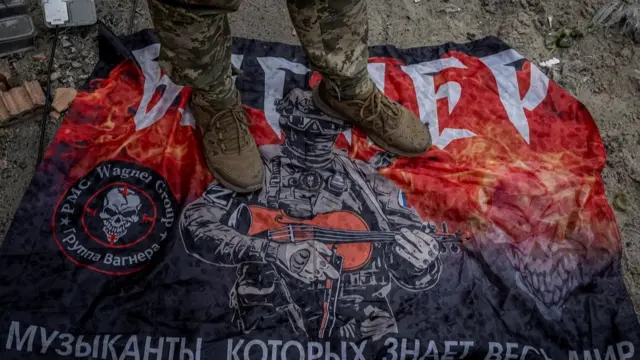Western armour already seen inside Russiapublished at 11:31 BST 15 August 2024
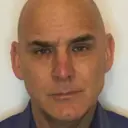 Jonathan Beale
Jonathan Beale
Defence correspondent
There have already been sightings of Western supplied armour inside Russia, since Ukraine launched its new offensive earlier this month.
They include US-supplied Bradley and Stryker armoured vehicles as well as German-supplied Marders. There have been no images shown so far of either UK Challenger Tanks or US Abrams tanks over the border.
However, Western military experts have highlighted the success of the Ukrainian offensive for its use of what they call “combined arms manoeuvre” – using troops alongside armoured vehicles, artillery and tanks as well as electronic warfare and drones – to attack.
That was something missing form last year’s Ukrainian offensive in the South and East of the country - which was impeded by heavily mined Russian fortifications making it difficult and dangerous to operate armour.
One of the 14 UK supplied Challenger 2 tanks was destroyed in that thwarted offensive. The British supplied tanks have been operated by Ukraine’s 82nd Air Assault Brigade, who were first trained in the UK in how to operate the Challenger 2. It’s known that Ukraine has used some of its best trained and best equipped units to conduct its attack over the border.
